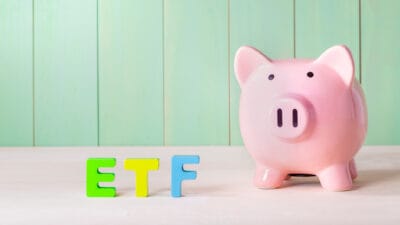The Vanguard Australian Shares Index ETF (ASX: VAS) is a very popular investment on the ASX. How popular? Well, it's only the Australian stock market's most popular index fund, with over $14.7 billion in assets under management.
ASX investors seem to love the low-cost diversification that this exchange-traded fund (ETF) provides.
But if you're one of VAS's evidently numerous investors, you might want to make sure you're doing it right. There's a simple step that anyone wanting the best returns they can get should take. Otherwise, you'll be nullifying one of the best benefits of holding this index fund.
Let's just backtrack a little and go through how this ETF works. The Vanguard Australian Shares ETF is an index fund that tracks the S&P/ASX 300 Index (ASX: XKO). This means that VAS holds the largest 300 shares on the ASX, weighted by market capitalisation.
As such, larger shares like Westpac Banking Corp (ASX: WBC) and Telstra Group Ltd (ASX: TLS) influence this ETF's performance far more than smaller companies like Ampol Ltd (ASX: ALD) and Adairs Ltd (ASX: ADH).
Investors enjoy returns from the Vanguard Australian Shares ETF when the prices of these 300 shares collectively do well. They also receive returns in the form of dividends. Since the VAS ETF holds all 300 shares in the ASX 300 Index, any dividends as well as franking credits it receives are passed on to VAS investors.
How important are these dividends? Well, they are essential if you wish to get the biggest bang for your buck with this investment.
How to get the best ASX returns out of the VAS ETF
Vanguard doesn't break down its returns between dividends and growth. However, one of its competitors does.
The SPDR S&P/ASX 200 Fund (ASX: STW) is an index fund very similar in nature to the Vanguard Australian Shares ETF. The only discernable difference is that this ETF tracks the largest 200 ASX shares, rather than the larger 300-share portfolio VAS uses.
Over long periods of time, the returns of these two ETFs are very similar. Over the past five years (as of 29 February), VAS has averaged a return of 8.73% per annum, while STW has returned an average of 8.52% per annum over the same period.
SPDR tells us that of that 8.52% average, only 3.75% per annum came from capital growth (unit price appreciation). The remaining 4.78%? From dividend returns.
This means that an investment in any ASX index fund, VAS, STW or similar, can probably be counted on to deliver the bulk of its returns through dividend income rather than growth.
So if you own any ASX index fund, you need to keep this in the forefront of your mind. Treasure those dividends. Make sure you are reinvesting them back into your index fund, or at least into other investments, and not on a night out on the town.
Failure to do so will cripple the compounding process and result in a huge loss of potential wealth over time.









